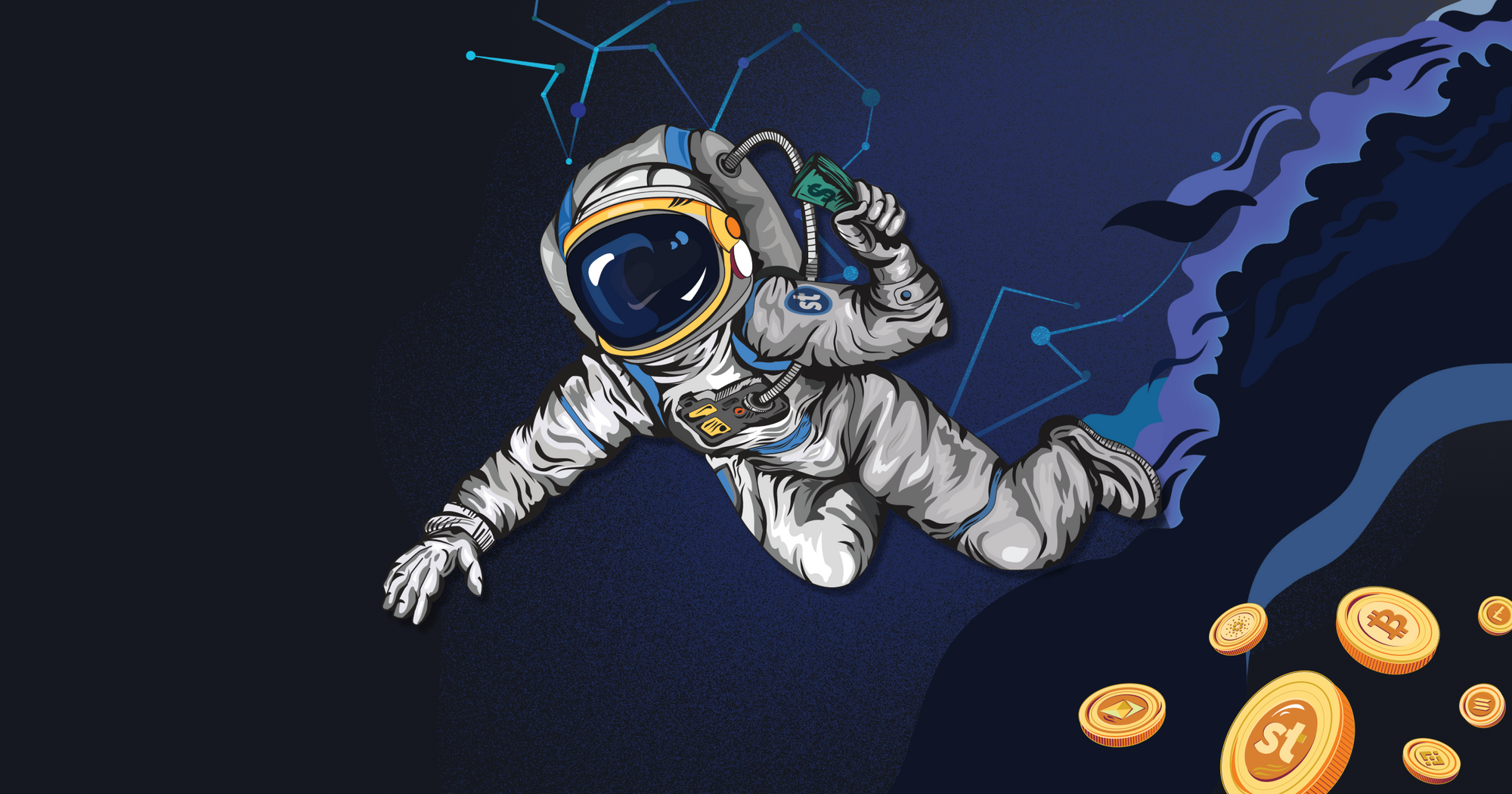What is utility tokenomics? User Guide.
Tokenomics is a set of parameters that create the value of a digital asset. It takes into account a variety of factors, from the supply of a token to its utility.

Utility tokenomics is an economic model that controls utility tokens and digital assets that provide access to a specific product or service in a blockchain ecosystem. The value of these tokens is based on their utility or function within the platform rather than being a form of investment like traditional cryptocurrencies.
Tokenomics is not just a theoretical concept but a practical tool when issuing a specific token type. Our guide to tokenomics will help you understand the practical aspects of token utility and what factors companies should weigh before launching their digital asset.
“I believe the next generation for markets, the next generation for securities, will be tokenization of securities,” — BlackRock CEO Larry Fink
What is Utility Tokenomics?
Utility tokenomics is the economic principles and mechanisms that regulate the generation, distribution, and use of utility tokens in the blockchain ecosystem.
Unlike security tokens, utility tokens are digital assets that enable access to a specific product or service within a decentralized network or platform. Unlike security tokens, which signify ownership of an asset or company and adhere to regulatory compliance, utility tokens primarily facilitate transactions or interactions in the ecosystem.
The value of utility tokens is determined by the benefits they provide. It may include access to services, voting rights, participation in governance, or other functions offered by the underlying platform.
Utility Tokenomics often utilizes network effects, where the value of the ecosystem increases as more users join and interact with the platform. An increase in the number of users usually leads to increased demand for utility tokens, increasing their value.
Utility token models may also include token burning or buybacks that reduce the supply of tokens, potentially increasing their scarcity and value to existing holders. Staking and governance mechanisms also incentivize token holders to purchase and hold on to tokens, contributing to their value.
Key Components of Tokenomics
Key elements work well together and are important in developing and analyzing tokenomics models for blockchain and cryptocurrency projects.
- Token supply. The total number of tokens can be fixed (a predetermined number is created and does not change) or dynamic (tokens are minted or burned based on certain conditions).
- Demand for tokens. Tokens can serve different purposes, such as access to services, management rights, rewards for network participation, or a medium of exchange.
- Token supply.Tokens can serve different purposes, such as access to services, management rights, rewards for network participation, or a medium of exchange.
How Utility Tokenomics Works
Mining and staking are the two main mechanisms blockchain networks use to achieve consensus and ensure network security. Using Ethereum and Tezos as examples, let's examine each mechanism.
Mining:
Mining is a process in which participants (miners) compete to solve complex mathematical puzzles to confirm and add new transactions to the blockchain. Miners are rewarded for their efforts in the form of newly created cryptocurrency coins. The mining process also guarantees the security and decentralization of the network, as it is too expensive from a computing point of view for one person to control most of the network's computing power.
Ethereum uses a Proof of Work (PoW) consensus mechanism similar to Bitcoin. Miners compete to solve cryptographic puzzles using their computing power. The first miner to solve the puzzle adds a new block of transactions to the blockchain and is rewarded in Ether (ETH), the Ethereum network's cryptocurrency.
Staking:
Staking is an alternative consensus mechanism used in some blockchain networks. Participants (validators) block a certain amount of cryptocurrency as security to confirm transactions and create new blocks. Validators are selected to create new blocks based on the amount of cryptocurrency they own and are willing to “stake” as collateral. The goal of staking is to achieve consensus in a more energy-efficient and environmentally friendly way than mining.
Tezos uses the Proof of Stake (PoS) consensus mechanism, in particular, a variant known as Liquid Proof of Stake (LPoS). In Tezos, token holders can become “bakers” by depositing a certain amount of Tezos tokens (XTZ) as collateral. Based on the number of tokens they have deposited, bakers are randomly selected to create and validate new blocks. Bakers who successfully validate blocks receive additional XTZ tokens as a reward for participating in the process of reaching consensus in the network.
While mining and staking serve the same basic purpose — to provide security and achieve consensus in blockchain networks — they use different mechanisms to achieve this goal. Mining relies on computing power and solving cryptographic puzzles (Proof of Work) while staking relies on participants who deposit cryptocurrency as collateral and are chosen to confirm transactions (Proof of Stake).
Profitability and Incentives
Decentralized services, especially those supported by blockchain technology, offer several mechanisms to boost investor returns. One key way to achieve this goal is to make financial markets more accessible and efficient.
On the one hand, decentralized services eliminate many barriers to entry that traditional financial systems impose. Investors often face geographic restrictions, lengthy approval processes, and high transaction costs in traditional markets. Decentralized platforms, on the other hand, allow investors from anywhere in the world to access a wide range of assets and investment opportunities with minimal barriers. This greater accessibility can lead to a more diverse and dynamic investment portfolio, potentially resulting in higher returns.
Decentralized services eliminate the need for intermediaries such as banks, brokers, and clearinghouses, which typically charge transaction fees. By using blockchain technology and smart contracts, investors can enter into transactions directly with each other. Cost savings help to increase investors' profitability by increasing the net return on investment.
Another way is to create liquidity pools. Participation offers investors the opportunity to earn passive income while increasing market liquidity. By providing liquidity to the pool, investors receive a share of the trading fees generated by the exchange, which can contribute to their overall income. Liquidity pools help to reduce price slippage and increase market efficiency by making it easier for investors to execute large transactions without significantly affecting the market price of an asset.
Token Allocation and Distribution
Token distribution in the blockchain ecosystem is a critical aspect of any project development. It not only determines how tokens are distributed but also shapes project management, network security, and community engagement. The token distribution process involves several strategies and mechanisms, each with its own strategic implications.
- ICO, IEO, Token Sale
ICOs, IEOs, or token sales are standard methods projects use to distribute tokens during the launch phase. A successful token sale can give a project the necessary capital to fund development and operations.
The chosen distribution model directly affects investor participation, token price discovery, and market dynamics. Distributing tokens to early investors and supporters can help build a loyal community and generate interest in the project.
- Airdrops and token grants
Airdrops involve the free distribution of tokens to existing cryptocurrency holders or specific communities. Airdrops can accelerate network effects and increase the distribution of tokens to potential users and stakeholders, contributing to the growth and adoption of the community.
- Periods of tokenization and blocking
Token distribution means gradually releasing tokens to investors, team members, or consultants over a period of time to equalize incentives and prevent dumping. Lock-in periods restrict the transfer or sale of tokens for a certain period after distribution.
Lock-in periods dampen short-term price volatility and reduce the risk of market manipulation, providing a more stable environment for token holders and investors.
- Mining liquidity and growing yields
Liquidity mining and yield farming incentivize users to participate in decentralized finance (DeFi) protocols by offering token rewards for providing liquidity or using the platform.
- Community and ecosystem development
Tokens can be distributed to community members, developers, and partners to support the ecosystem's growth and adoption.
Creating an active and engaged community is essential for a blockchain project's long-term success, and distributing tokens to active participants fosters loyalty, cooperation, and organic growth.
Role of Governance Tokens
Governance tokens are cryptographic tokens that give holders the right to participate in the decision-making processes of a decentralized project or platform. Holders can propose and vote on changes to the protocol, such as updates, parameter adjustments, or funding allocations.
By owning governance tokens, investors gain direct involvement in the management of the project and have a say in shaping its future direction. This participatory model promotes decentralization and community decision-making, aligning investors' interests with the project's long-term success. In addition, governance tokens are often accompanied by voting rewards or revenue-sharing mechanisms, which encourage active participation and engagement of token holders.
Economic Models in Utility Tokenomics
Utility tokenomics are the economic models that govern utility tokens' issuance, distribution, and use in a blockchain ecosystem. These financial models play a crucial role in incentivizing network participants, driving adoption, and maintaining the value of the tokens. Several economic models are commonly used in utility tokenization.
Deflationary Model
Within the deflationary model, there is a limit on the number of digital assets released into circulation. The offer only decreases for one reason or another. Burning tokens have become an essential tool to influence the price of a digital asset. Projects can use one of two types of token burning:
- Buyout. The project purposefully buys digital assets from users and withdraws them from circulation.
- Burning a transaction. A mechanism specified in a smart contract that provides for the removal of a certain proportion of tokens.
Crypto projects often choose the deflationary model because of its ease of development.
Inflationary Model
As part of the inflationary model, there may be no restrictions on emission, or they may be soft (for example, the emission of a strictly defined number of digital assets per year, like Ethereum). Successful inflation models follow specific rules:
- Tokens are issued according to a schedule or according to a non-linear function. The "minting assets on demand" model is unpromising.
- Annual inflation should be no more than 200%.
- The optimal balance is more than 20% of the initial circulating supply but less than 150% of annual inflation.
These rules are essential because it is not easy to maintain the price in an inflationary model. The offer increases and affects the rate. Therefore, it is vital to control emissions.
Mixed Economic Models
Some projects use both deflationary and inflationary models. They do not have emission restrictions. At the same time, they periodically launch a mechanism for burning tokens to control the supply.
The best example of such a model is Solana. This crypto is inflationary, but it has some instruments to reduce the rate of inflation. The starting inflation rate (at the time of launch) was 8% per year, but the project team is aiming for 1.5% per year. The system uses the model of burning tokens in transactions, which allows it to control inflation.
Best Practices in Tokenomics
Tokenomics is individual for each digital asset. Each cryptocurrency or token is guided by its principles. However, there are specific rules for successful utility token tokenomics. The main ones are the following:
- The token is helpful in the ecosystem. Without it, the ecosystem would not be as efficient or would not be efficient at all.
- The digital asset has a well-thought-out emission system.
- The system is scalable; transactions are processed quickly.
- The token or crypto has actual use — people can pay for goods or services or benefit from the project's platform.
- There are motivational features — economic or governmental.
- And most importantly, the digital asset has clear rules; it is "understandable" for users.
Summary
Tokenomics is of paramount importance for the success of any crypto project. Wrong decisions in utility token tokenomics can create significant problems for the project or destroy its prospects. Therefore, it is extremely important to think through every step of the platform's existence and the digital assets associated with it. Whether or not a digital asset becomes interesting for investors depends on well-planned tokenomics. As part of our digital assets consulting service, we help our clients correctly draw up tokenomics to make their projects viable and interesting for investors. You can contact us right now to book your first free consultation.


